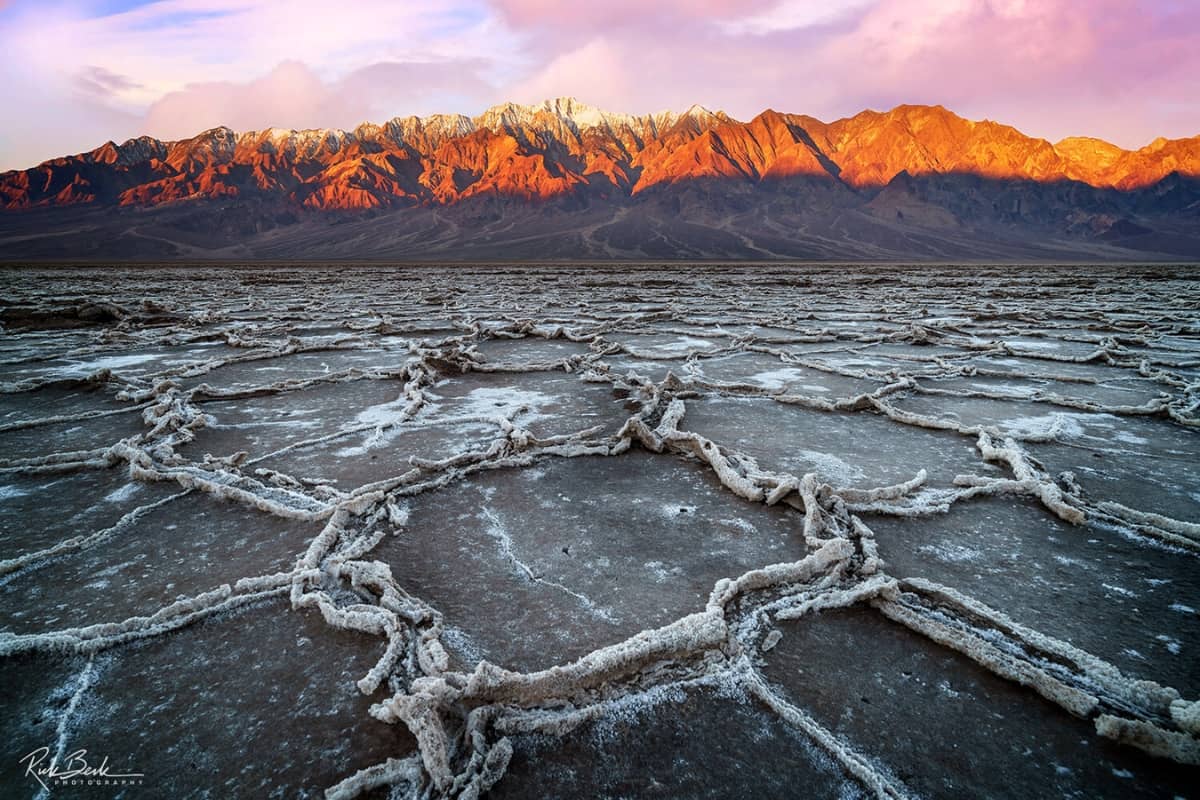Badwater Basin, located in Death Valley National Park, California, is a place of extreme contrasts. Known for its breathtaking salt flats, it’s the lowest point in North America, lying 282 feet below sea level. While it attracts thousands of visitors every year, few are aware of the dark secrets that lurk beneath its sun-scorched surface. Here are six shocking truths about Endorheic Badwater that locals prefer to keep hidden.
1. Toxic Elements Lurking Beneath the Surface
The vast salt flats of Badwater Basin create a mesmerizing landscape, but beneath this beauty lies a hidden danger. The water that occasionally pools in the basin is not only undrinkable but also potentially hazardous. Studies have shown that the area contains high concentrations of toxic elements, including arsenic and mercury, remnants from mining activities that date back to the 19th century. These toxic metals have leached into the soil and water, making prolonged exposure risky for both humans and wildlife. Visitors are often unaware that merely touching the water or soil can pose a health risk, especially if they have cuts or open wounds.
2. The Phantom Lights of Badwater
Among the lesser-known mysteries of Badwater Basin are the reports of strange, ghostly lights appearing on the salt flats at night. These lights, often described as glowing orbs or flickering flames, have been spotted by locals and some visitors, though they rarely talk about it openly. Some speculate that these lights are the spirits of miners who died in the area during the gold rush era, while others suggest they are the result of unexplained natural phenomena. The scientific community remains divided, with some researchers attributing the lights to reflections from distant sources, while others believe they are caused by rare atmospheric conditions. Regardless of the cause, the Phantom Lights of Badwater add an eerie dimension to the already otherworldly landscape.
3. The Hidden Fissures and Treacherous Terrain
The seemingly flat and endless expanse of Badwater Basin is deceptive. Beneath the surface, hidden fissures and unstable salt crusts pose significant dangers to those who venture too far from the beaten path. These fissures can open suddenly, creating cracks that are deep enough to trap a person’s foot or leg, potentially leading to serious injury. Moreover, the salt crust can be thin in some areas, causing unsuspecting visitors to break through and sink into the soft, muddy ground below. Despite these risks, warnings are minimal, and most tourists are unaware of the potential dangers, assuming the terrain is safe to explore freely.
4. The Vanishing Wildlife
Badwater Basin might seem devoid of life at first glance, but it actually supports a unique ecosystem. However, this fragile environment is under threat from both natural and human-induced changes. Local species, particularly the Badwater snail, are facing extinction due to the increasing salinity of the water and habitat disruption caused by the influx of tourists. The snail, which is only found in this area, is a vital part of the local food chain, and its decline could have far-reaching consequences. Despite this, there has been little public discussion or conservation effort, as the park officials focus on promoting tourism rather than addressing the ecological challenges.
5. Scams Targeting Unsuspecting Tourists
Badwater Basin, like many popular tourist destinations, has become a hotspot for scams and fraudulent activities. One of the most common involves unauthorized guides offering “exclusive” tours of the salt flats, claiming they can take visitors to hidden spots or show them the best photo opportunities. These guides often overcharge for their services, and in some cases, they lead tourists into dangerous areas of the basin where they are more likely to encounter the hidden fissures or toxic elements mentioned earlier. Additionally, there have been reports of vendors selling fake “Badwater salt” as a souvenir, which is actually just table salt or cheap substitutes. Tourists, unaware of the true risks, often fall victim to these scams, leaving with a lighter wallet and potentially dangerous mementos.
6. The Unstable Ground Beneath
One of the most significant yet least known dangers of Badwater Basin is its geological instability. The area is prone to seismic activity due to its location along the boundary between the Pacific and North American tectonic plates. Earthquakes are not uncommon in this region, and while most are minor, there is always the potential for a more significant event. The unique geology of the basin, with its salt flats and underlying sediments, could amplify the effects of an earthquake, leading to sudden shifts in the landscape. Visitors might find themselves in the midst of a natural disaster with little warning, as the vast, open terrain offers few places for shelter.
Conclusion
Badwater Basin is undeniably one of the most striking locations in Death Valley National Park, but it is also a place fraught with hidden dangers. From toxic elements in the soil to the potential for seismic activity, the risks are real, even if they are not immediately apparent. The dark secrets of Badwater are often overshadowed by its beauty, leaving visitors unaware of the hazards they might face. While the area remains a popular destination for tourists, it is crucial for those who visit to be informed and cautious, respecting the power and unpredictability of nature that governs this unique landscape. The locals, who know these dangers well, may keep quiet about them, but those who wish to explore Badwater Basin should do so with their eyes wide open.






